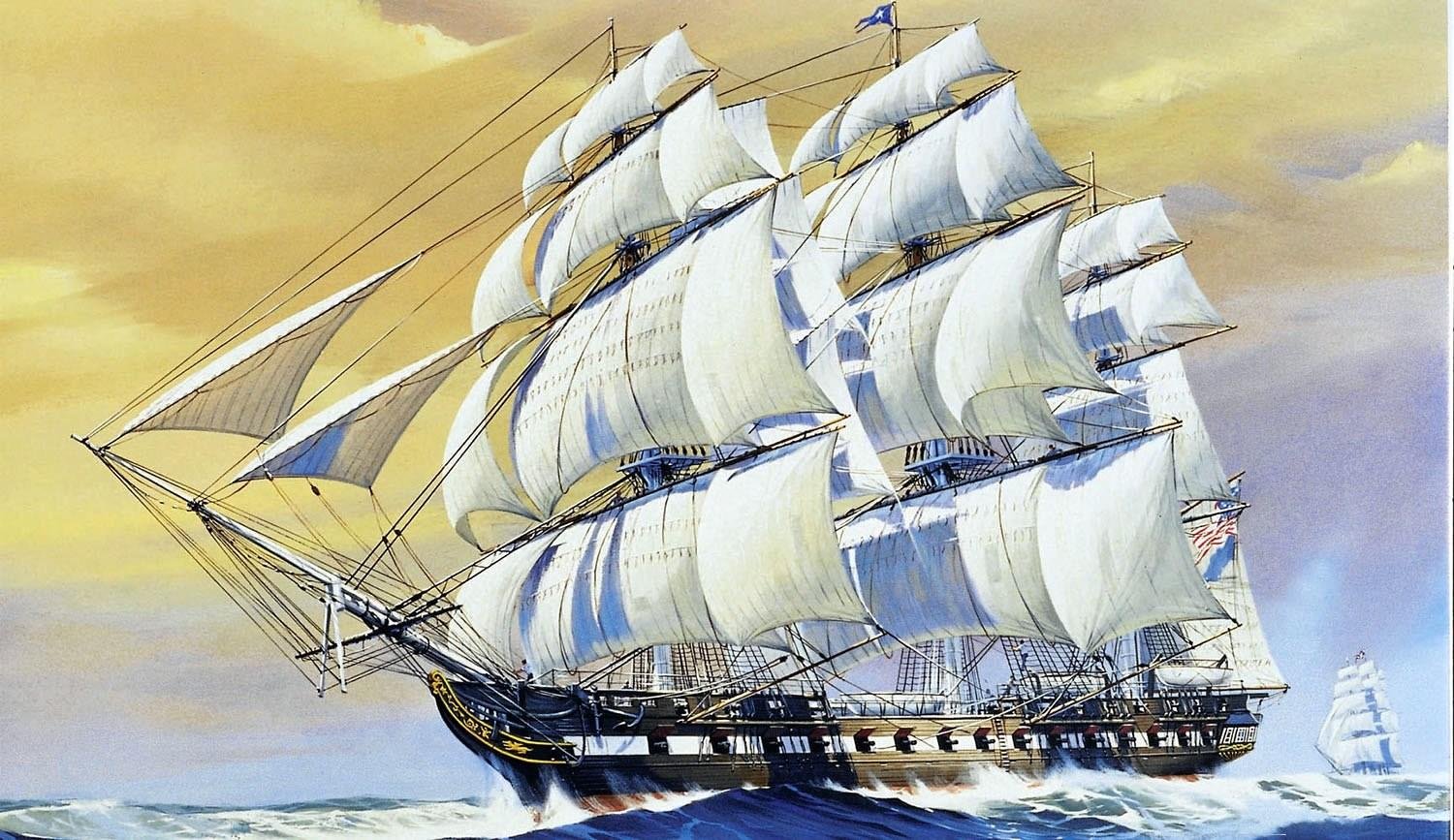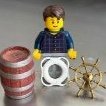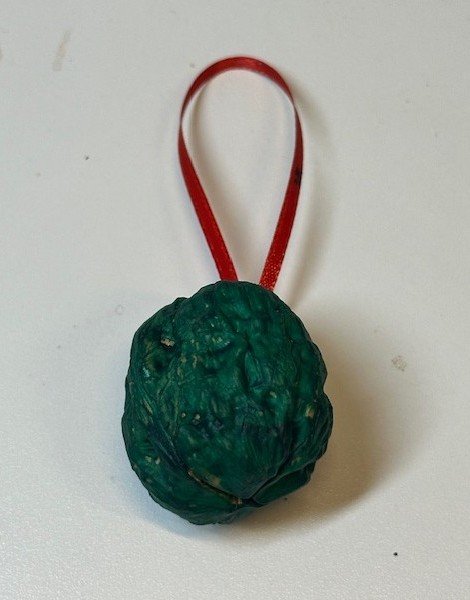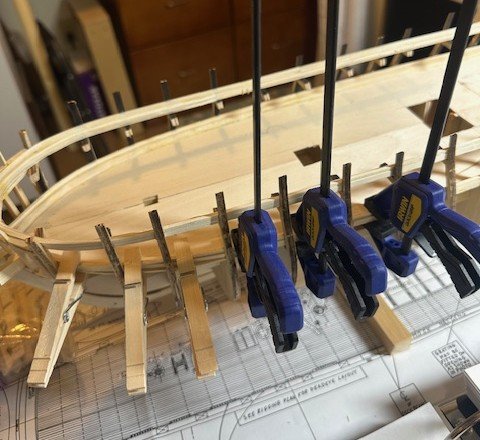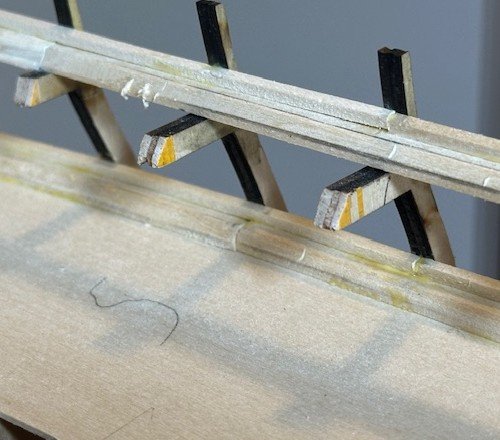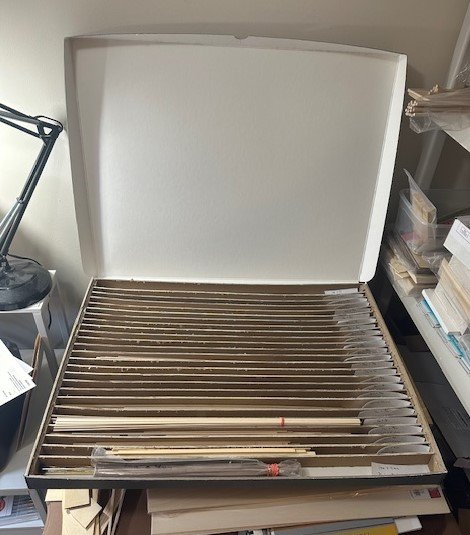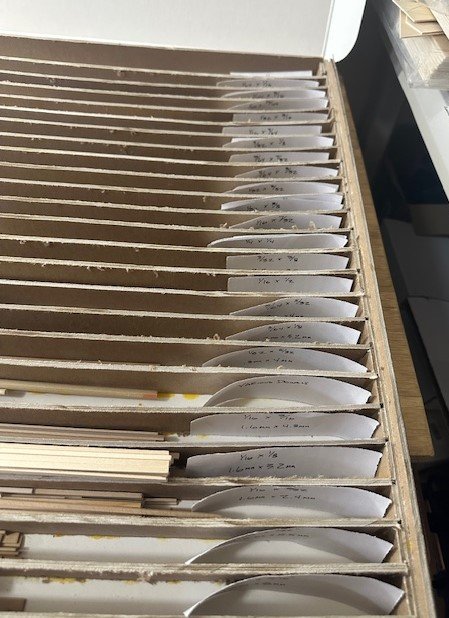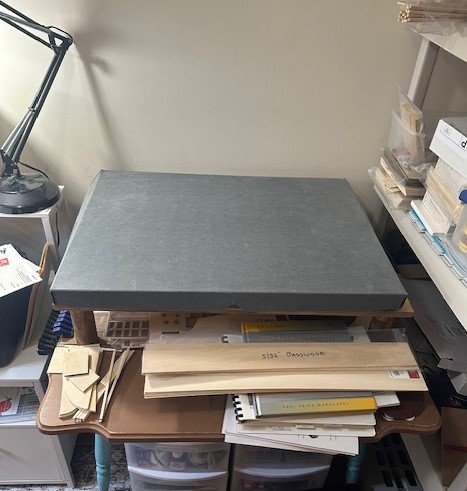-
Posts
1,042 -
Joined
-
Last visited
About GGibson

- Birthday 06/15/1955
Profile Information
-
Gender
Male
-
Location
Kansas City Metro Area, USA
-
Interests
Enjoying Retirement / Spoiling Grandchildren / Model Ship Hobbying / Backyard BBQ Guru
Recent Profile Visitors
-
 aaronc reacted to a post in a topic:
Model Building With Brass
aaronc reacted to a post in a topic:
Model Building With Brass
-
 Rik Thistle reacted to a post in a topic:
2023 Donations drive
Rik Thistle reacted to a post in a topic:
2023 Donations drive
-
GGibson started following Hull Planking Calculator
-
 GGibson reacted to a post in a topic:
USS Constitution by Der Alte Rentner - Model Shipways - 1/76
GGibson reacted to a post in a topic:
USS Constitution by Der Alte Rentner - Model Shipways - 1/76
-
 Geoff Matson reacted to a post in a topic:
USS Constitution by mtbediz - 1:76
Geoff Matson reacted to a post in a topic:
USS Constitution by mtbediz - 1:76
-
 Paul Le Wol reacted to a post in a topic:
USS Constitution by mtbediz - 1:76
Paul Le Wol reacted to a post in a topic:
USS Constitution by mtbediz - 1:76
-
 Paul Le Wol reacted to a post in a topic:
USS Constitution by mtbediz - 1:76
Paul Le Wol reacted to a post in a topic:
USS Constitution by mtbediz - 1:76
-
 GGibson reacted to a post in a topic:
USS Constitution by mtbediz - 1:76
GGibson reacted to a post in a topic:
USS Constitution by mtbediz - 1:76
-
 mtbediz reacted to a post in a topic:
USS Constitution by mtbediz - 1:76
mtbediz reacted to a post in a topic:
USS Constitution by mtbediz - 1:76
-
 mtbediz reacted to a post in a topic:
USS Constitution by mtbediz - 1:76
mtbediz reacted to a post in a topic:
USS Constitution by mtbediz - 1:76
-
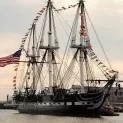
USS Constitution by mtbediz - 1:76
GGibson replied to mtbediz's topic in - Build logs for subjects built 1751 - 1800
At first glance, Jon, it looked to me (both on the real ship and on Mustafa's) as some sort of twisted loops, rather than a simple hook. Excellent work! -

USS Constitution by mtbediz - 1:76
GGibson replied to mtbediz's topic in - Build logs for subjects built 1751 - 1800
Looks great, Mustafa! It all looks perfectly aligned. Is this the rigging I have seen referred to as a "swifter"? -
 GGibson reacted to a post in a topic:
USS Constitution by Der Alte Rentner - Model Shipways - 1/76
GGibson reacted to a post in a topic:
USS Constitution by Der Alte Rentner - Model Shipways - 1/76
-
 GGibson reacted to a post in a topic:
USS Constitution by GGibson - Model Shipways - 1:76.8
GGibson reacted to a post in a topic:
USS Constitution by GGibson - Model Shipways - 1:76.8
-
 usedtosail reacted to a post in a topic:
USS Constitution by GGibson - Model Shipways - 1:76.8
usedtosail reacted to a post in a topic:
USS Constitution by GGibson - Model Shipways - 1:76.8
-
 woodartist reacted to a post in a topic:
USS Constitution by GGibson - Model Shipways - 1:76.8
woodartist reacted to a post in a topic:
USS Constitution by GGibson - Model Shipways - 1:76.8
-
 bhermann reacted to a post in a topic:
USS Constitution by GGibson - Model Shipways - 1:76.8
bhermann reacted to a post in a topic:
USS Constitution by GGibson - Model Shipways - 1:76.8
-
 GGibson reacted to a post in a topic:
USS Constitution by GGibson - Model Shipways - 1:76.8
GGibson reacted to a post in a topic:
USS Constitution by GGibson - Model Shipways - 1:76.8
-
 GGibson reacted to a post in a topic:
USS Constitution by GGibson - Model Shipways - 1:76.8
GGibson reacted to a post in a topic:
USS Constitution by GGibson - Model Shipways - 1:76.8
-
Nothing really to update on my Constitution build. Since my last post, I have been assessing where the gun deck cannons will be placed in order to prepare for the cannon framework and, as a follow-up to Mustafa's critique after my last update, determining where exactly the new spar deck beams will be placed so I can get the old beam stubs out of the way. What I have been working on, though, diligently over the past week or so is my annual Christmas tree hanging walnuts project. Back when I was a young child, my father would carefully crack open walnuts, dig the walnut and other pieces out of the shell, place money back in the shell, glue it, put a hanging bow on it and paint it so it hung on the tree on Christmas Eve. I carried on that tradition with my children and now with my grandchildren. Every year I come up with some new combination of ribbon and walnut colors in order to identify whose walnuts are whose. Most of the walnuts have some denomination of currency folded and stuffed inside them, but some just have a few pennies in them just to tease them. (Even the ones with currency in them also have a couple of dimes in them so they rattle when shaken.) Here's a picture of one of them. Each of the five grandkids have a dozen walnuts this year, so with five grandkids, that's... 60 walnuts! It's a bit of an organizational challenge as I complete them all (and keep them identified for whose are whose!), but I do enjoy it and the kids all look forward to "Papa's Walnuts"! Here's to a Happy Holiday season to all of my MSW friends!
-
 GGibson reacted to a post in a topic:
USS Constitution by JSGerson - Model Shipways Kit No. MS2040
GGibson reacted to a post in a topic:
USS Constitution by JSGerson - Model Shipways Kit No. MS2040
-
 GGibson reacted to a post in a topic:
USS Constitution by Der Alte Rentner - Model Shipways - 1/76
GGibson reacted to a post in a topic:
USS Constitution by Der Alte Rentner - Model Shipways - 1/76
-
 GGibson reacted to a post in a topic:
USS Constitution by mtbediz - 1:76
GGibson reacted to a post in a topic:
USS Constitution by mtbediz - 1:76
-

USS Constitution by mtbediz - 1:76
GGibson replied to mtbediz's topic in - Build logs for subjects built 1751 - 1800
Your ship looks pretty much exactly like what I saw in Boston in September, Mustafa! Rigging is looking sharp! Can't wait to see more as your ship gets even taller! 👍🏆 -
 GGibson reacted to a post in a topic:
HMS Beagle by usedtosail - OcCre - 1:60
GGibson reacted to a post in a topic:
HMS Beagle by usedtosail - OcCre - 1:60
-
I appreciate the feedback, Mustafa! As I was preparing for this Constitution build and researching other completed and ongoing build logs, I was trying to determine the best approach to this kit bashing and the removal of the spar deck beams in order to expose the gun deck. Obviously, in your scratch build, you were able to avoid the spar beam issues and you added the new spar beams in an orderly sequence, after the horizontal, vertical and diagonal knees were created and placed on the ship. The two “bashed kits” that I reviewed that had removed their spar deck beams fairly early in the process and subsequently added at least some version of knees were from Tom (usedtosail) and Jon, and so I’ve been trying to follow their tails as best as I can through their spar beam removal processes. As I said at the time, adding the spar deck waterways when I did added some strength and support to the bulwark extensions. One difference I have noted, though, between what Jon did, as a for-instance, and what I did is that he cut off his spar deck beams right up against the waterways. I had left mine sticking out a bit for now, subject to determining where the new beams would be located. As a part of that new “plan my approach in advance” strategy I am employing, now is the time to make those spar deck beam location determinations, so that the knees locations can also be best planned. And, to your point, Mustafa, regarding gaps in my updates, including too many steps in each update, and not allowing you veterans an opportunity to provide timely advice, I will do better in keeping future updates more concise. Again, I appreciate your input and advice, fellas! Thanks!
-
Hi Mustafa! Thank you so much for peeking in with your advice and recommendations. I cannot adequately express how much veteran advice from gentlemen like you mean to me in this build process. We are so lucky to have you guys around. With that said, yes, my plan is to expose the gun deck similarly to what you and Jon have so successfully done. You had given me the reminder about the spar deck beam replacement concern back in October on Post #73, and I have not forgotten that reminder! When I cut those old beams, I cut them back to a point where, whether new beams are attached back directly to them or if they are just left as stumps because of new beam positioning, the old stump portions would be "hidden" under the spar deck edge decking that will be in place for the carronade guns and carriages. I am wondering now if accurate placement of the gun deck knees (directly under the spar deck) will be affected by any of these stubs. Perhaps those stubs affected will need to be cut back farther against the bulwarks. Since yours was a complete scratch build, of course, you didn't have the old beam stubs to be concerned about. I will, though, look back and see again how Jon handled all of this in his kit-bashing. In your reminder post on Post #73, you provided a build log location on Jon's log where he raised his concerns. Time to go back and study this all in greater detail and, as you stated above, Mustafa, plan my approach in advance! Once again, I appreciate ALL of you gentlemen that preceded us in these early steps!
-
Hey Terry! The Bluenose looks really nice. Very interesting color on the lower hull. I love its uniqueness! And the launch ways looks sharp, as well! I had seriously thought about a launch way for my Bluenose but then bailed and did a standard pedestal base. Now that I see yours, it's tempting to go back and do one for it! 👍🏆
-
Completed a few other things, so another quick update. The gun deck waterways and planksheers placement didn’t take too long to complete. It was pretty much and “rinse & repeat” process from what I had done previously for the spar deck waterways and planksheer. For the gun deck waterways, I did not have any 5/16” x 5/32” strips handy, so that gave me an opportunity to cut a few strips on my Byrnes saw from a 5/32” sheet. I then used the same process I did on the spar deck waterways, trimming a 45-degree bevel into one side 3/32” deep using my disk sander. Longer strips were placed from the stern bulkheads up to Bulkhead F. A curved waterway piece was then measured and cut for the sharper bend from Bulkhead F up to the bow. The planksheer joint was made at Bulkhead G and, again as I did with the spar deck pieces, I was able to bend the forward planksheer strips by simply holding them under running hot water for a minute or so. All in all, no issues, especially since I had done the same process earlier for the spar deck. The closeup pictures of the waterways and planksheers also reminded me that I need to give everything a nice bit of sanding, too, before painting them! I’ve been wavering a bit on what to do next… either the gun port framing on the gun deck or the planking on the gun deck. I believe the gun port framing will be next, though. I also need to do some more work back in the Commodore’s Cabin area, which will affect the planking, as well, so… onward to lots of gun port framing! Appreciate the quick peek, comments, advice and criticism.
-
Your rudder work at the stern looks awesome, Peter! Excellent! And... as we have all said at one time or another on each other's build logs... while we all strive for perfection and see the "little oops" in our own work, no one is going to be taking a magnifying glass to your work once it's completed and in the display case. The picture view you are sharing with us is what everyone will see once completed. I'm not saying don't fix what you are seeing, but... ok, nevermind... we're all going to fix our "little oops", anyways. CARRY ON, SIR! 🤷♂️🤣🏆
-
Peter, in a shipbuilding zoom meeting I participated in yesterday, a gentleman suggested using 3M Marine Adhesive Sealant 5200 for adhering copper plates to the hull of a model ship. It sounds like that would work well with brass to wood, perhaps, as well. Several others chimed in and said they've used it successfully, too. Perhaps worth a go?
About us
Modelshipworld - Advancing Ship Modeling through Research
SSL Secured
Your security is important for us so this Website is SSL-Secured
NRG Mailing Address
Nautical Research Guild
237 South Lincoln Street
Westmont IL, 60559-1917
Model Ship World ® and the MSW logo are Registered Trademarks, and belong to the Nautical Research Guild (United States Patent and Trademark Office: No. 6,929,264 & No. 6,929,274, registered Dec. 20, 2022)
Helpful Links
About the NRG
If you enjoy building ship models that are historically accurate as well as beautiful, then The Nautical Research Guild (NRG) is just right for you.
The Guild is a non-profit educational organization whose mission is to “Advance Ship Modeling Through Research”. We provide support to our members in their efforts to raise the quality of their model ships.
The Nautical Research Guild has published our world-renowned quarterly magazine, The Nautical Research Journal, since 1955. The pages of the Journal are full of articles by accomplished ship modelers who show you how they create those exquisite details on their models, and by maritime historians who show you the correct details to build. The Journal is available in both print and digital editions. Go to the NRG web site (www.thenrg.org) to download a complimentary digital copy of the Journal. The NRG also publishes plan sets, books and compilations of back issues of the Journal and the former Ships in Scale and Model Ship Builder magazines.

